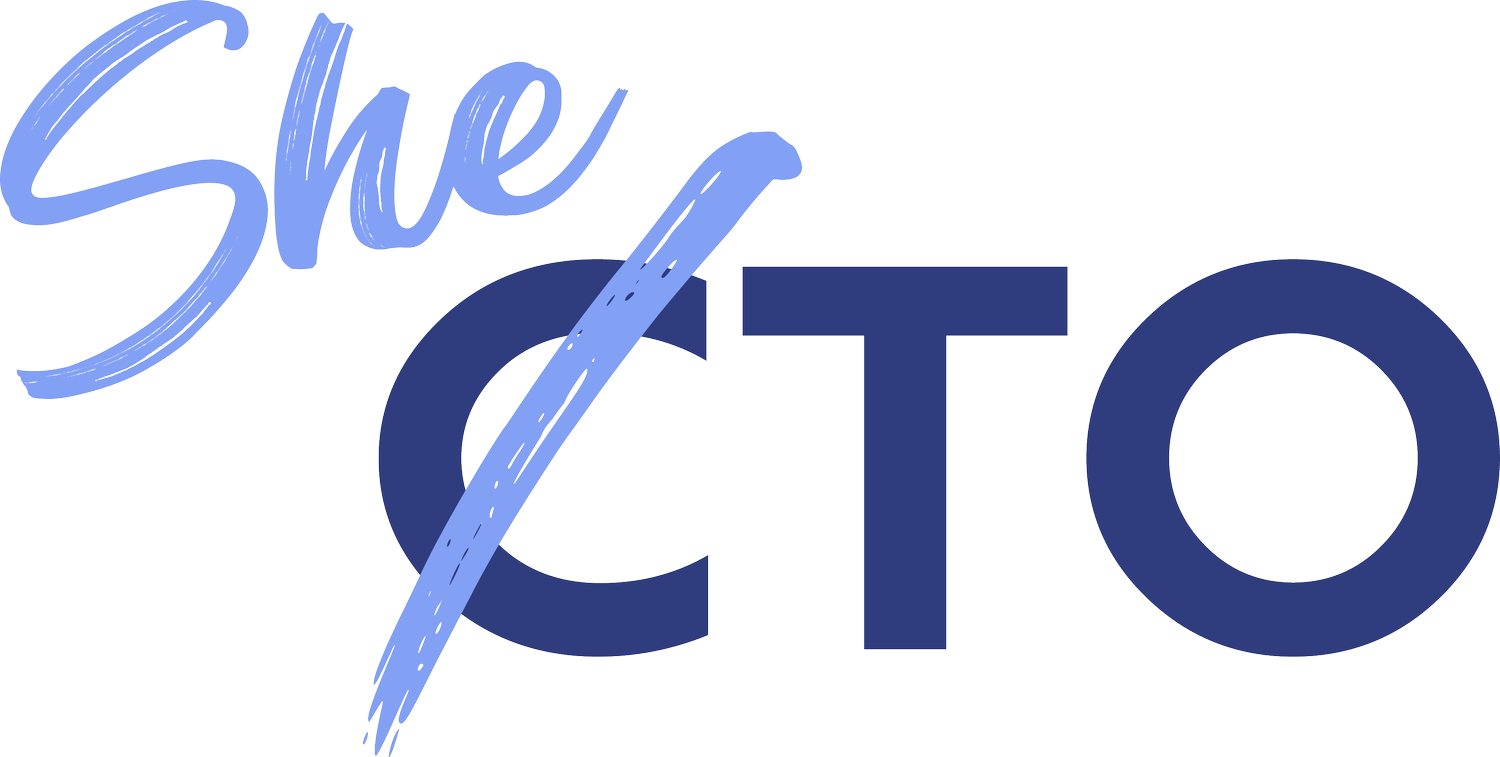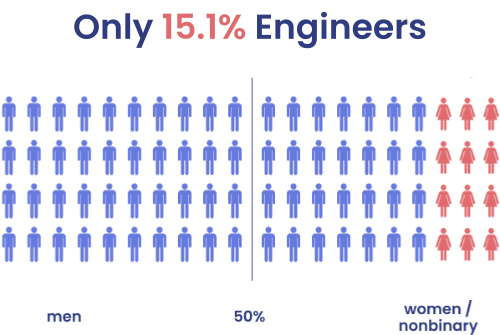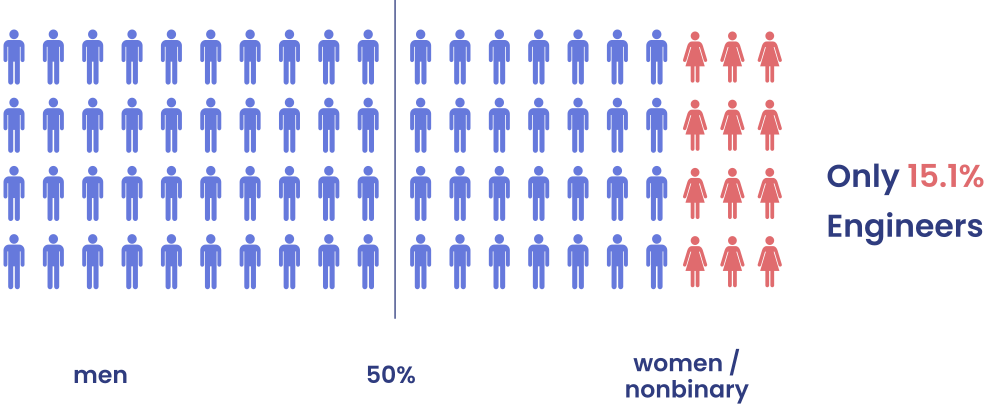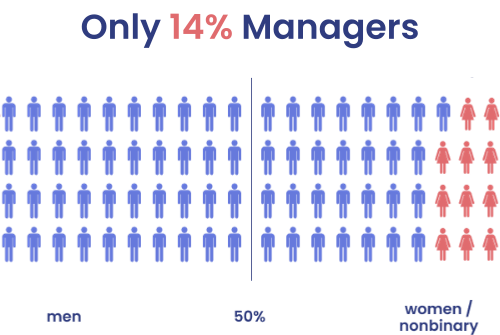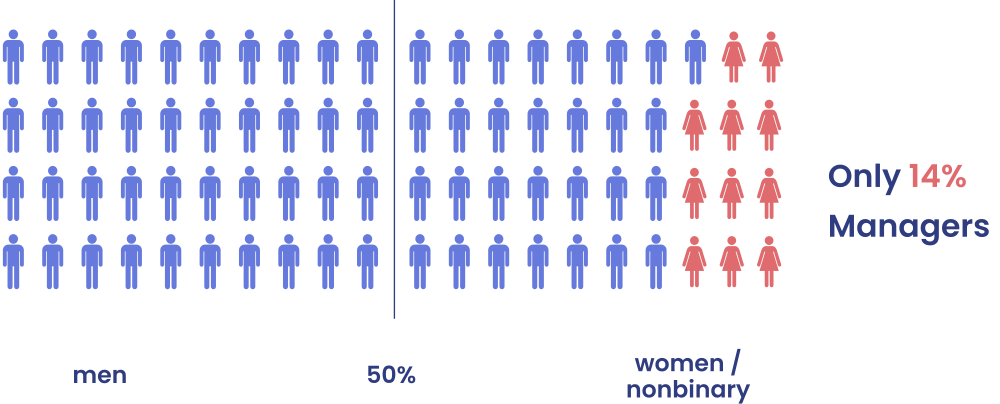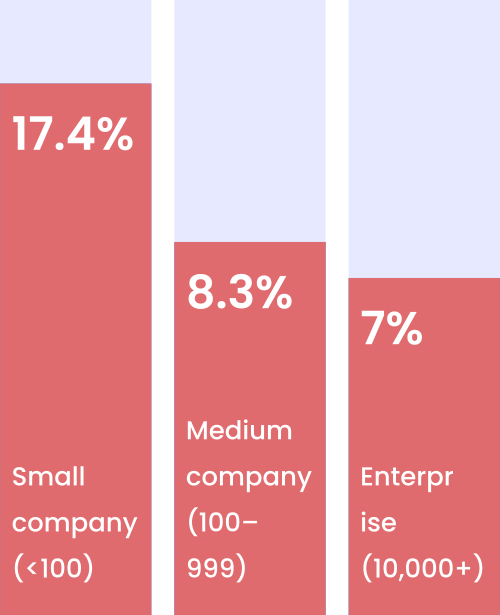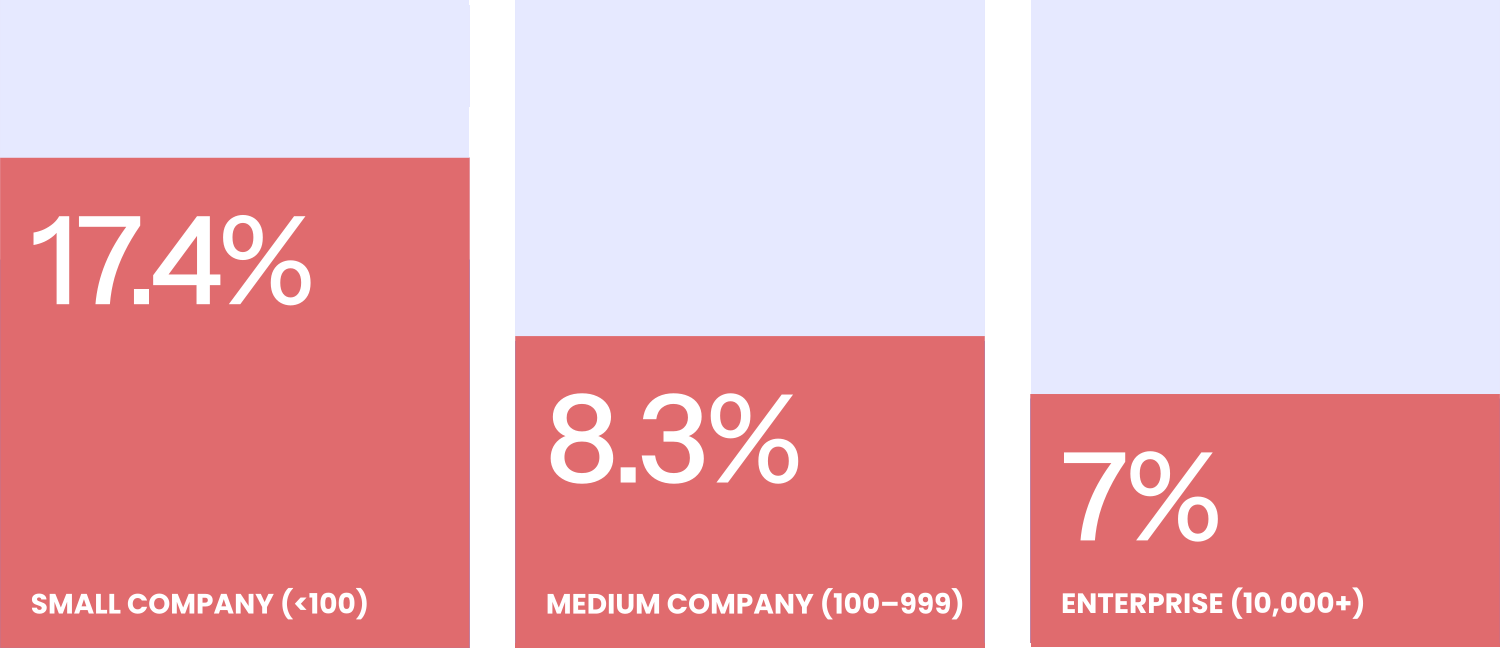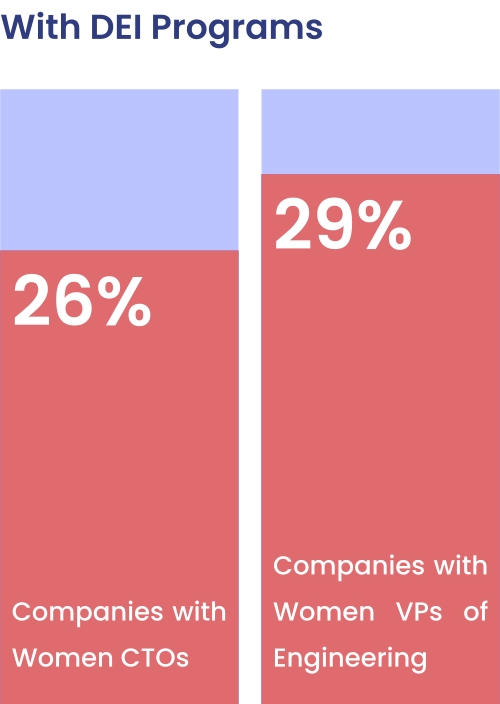
“Only 7% of companies have a woman or nonbinary CTO. The future cannot be built by the few.”
The State of Women in
Engineering Leadership
2025
Women continue to be significantly underrepresented in Engineering Leadership roles. This report offers clear ways to grow, retain and elevate talent within organizations.
It’s not just about fairness. It’s about resilience and competitive advantage.
Our future cannot be built by the few
Diverse engineering leadership isn’t just good for business, it’s essential to innovation, resilience, and progress. But too often, the people building the future don’t reflect the world for which they’re building. When women and nonbinary engineers are excluded from leadership, companies lose creative talent, insight, and competitive advantage.
This first of its kind report describes the state of the industry for women and nonbinary engineering leaders. This report shows that women are all but non existent in senior engineering roles.
ONLY 7%
Only 7 percent of the most senior engineering leaders (CTO/EVP/SVP) are women or nonbinary people.
INSIGHTS
The Pipeline Fails Women Early And Often
Despite years of effort, the engineering leadership pipeline fails women and nonbinary professionals from the start. Just 15% of engineers in our survey identify as women, a clear signal that barriers exist long before leadership becomes a factor.
Even for companies that have increased outreach and inclusive hiring at the entry level, too few organizations work to retain and advance that talent. Without strong on boarding, sponsorship, and clear growth pathways, the early-career pipeline leaks just as fast as it fills.
- One Senior Engineering Manager at a cyber security firm built a team that she described as having “fantastic representation of women,” and called it a“rare and special experience.”

Leaders who act on these insights will build for the future.
We need CEOs to build teams as diverse as the problems they're solving, because breakthrough innovation needs people who think and build differently, together
ONLY 9%
of Directors are women. That’s where the career ladder breaks
INSIGHTS
The Director Ceiling Is Real
The engineering career ladder breaks at the Director rung. While women and nonbinary engineers now make up a small but steady share of managers, they are not advancing to Director at the rate they should. Women hold 14 percent of the Engineering Manager roles, but just 9 percent of the Director roles. In a fair system, that number should rise, not fall.
We call this The Director Ceiling, the moment when opportunity narrows, bias compounds, and advancement shifts from process to perception. The leap to Director demands strategic influence, visibility, and advocacy. Too often, it’s where high-potential women and nonbinary leaders stall.
- A former machine learning engineering manager at a social media company

As I move up, I see less and less representation.
When I wanted to grow, I felt the ceiling
INSIGHTS
Representation Collapses as Companies Scale
As companies grow, opportunities shrink: women and nonbinary leaders hold only 7% of top engineering roles in enterprises.
INSIGHTS
The Executive Ladder Crests at 7%
Despite decades of effort, most women and non binary engineering leaders never make it to the top of the org chart. Two thirds of companies have zero women VPs.
Only 7% of companies have a woman or nonbinary leader at the top of engineering
INSIGHTS
Intentional Leadership Investment Pays Off
This year, wide swaths of corporate America is leaning out from previous commitments to fostering diversity equity and inclusion. But this backpedaling comes with a cost. Studies show that companies with higher executive representation of women and people of color outperform less diverse companies by 39%
With DEI Programs
Without DEI Programs
Support, structure, and strategy triple the chances of women making it to CTO

Get the Full Report
This is just the beginning.
Download the full State of Women in Engineering Leadership 2025 report to explore the complete dataset, personal stories, and proven solutions for building more inclusive engineering organizations.
